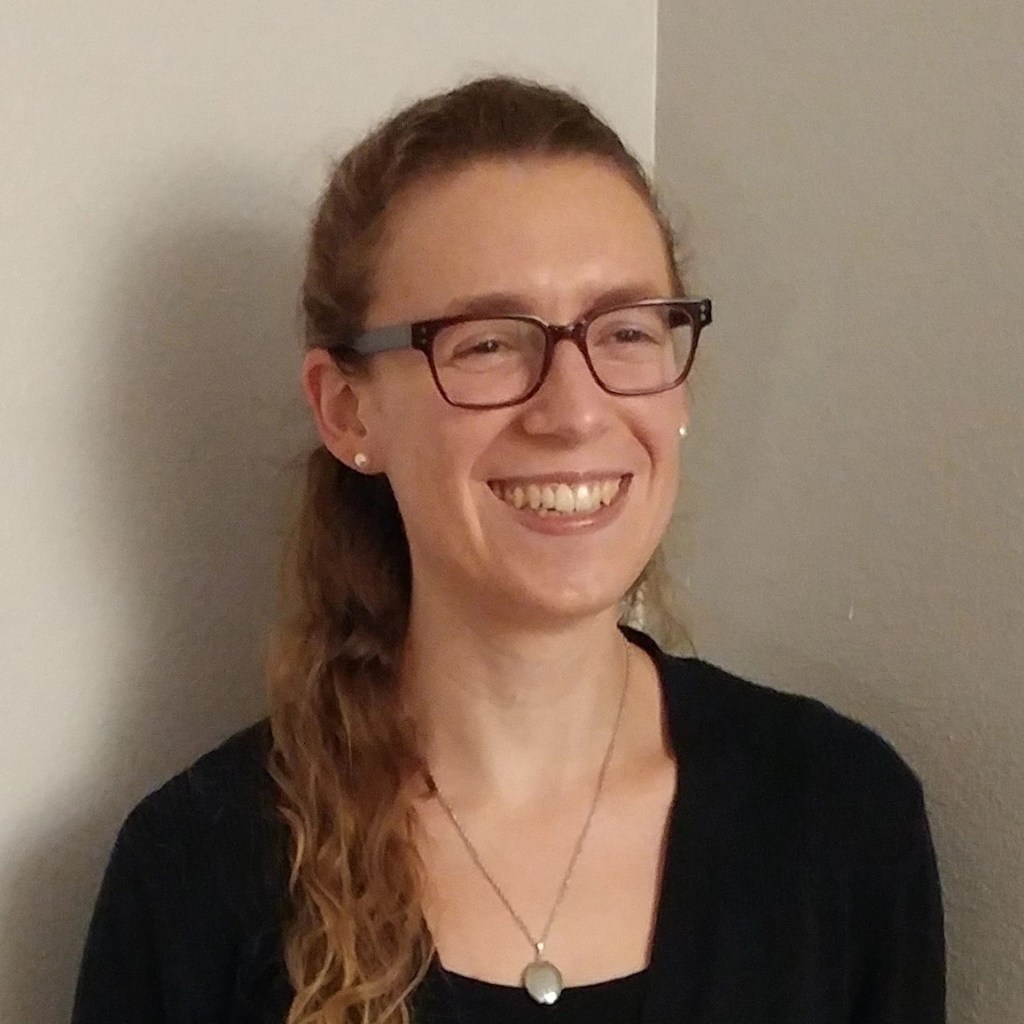Interview With Dr. Megan Gross of University of Massachusetts Amherst

Megan Gross is an Assistant Professor in the Department of Communication Disorders at the University of Massachusetts Amherst. She earned a Master’s degree in Speech-Language Pathology and a PhD in Communication Sciences and Disorders from the University of Wisconsin-Madison. Her research focuses on language development in bilingual children with typical development and with language difficulties. She teaches courses on language disorders in children and evaluation processes with culturally and linguistically diverse clients. Dr. Gross is currently working with colleagues to develop a Multicultural Certificate program for speech-language pathology (SLP) and audiology (AuD) students at UMass Amherst.
Note: You should consult with your doctor or speech pathologist for recommendations on treatment. The views and opinions expressed in this article are those of Dr. Gross and do not necessarily reflect the official policy or position of SpeechPathologyMastersPrograms.com
How did you become interested in bilingual language development?
I grew up surrounded by a variety of languages in New York City, and most of my friends in middle school and high school spoke languages other than English at home. I marveled at how they switched so easily between their home language and English and wondered what mechanisms allowed them to do this. Bilingual development is a complex process with many factors to consider, such as when, where, and from whom children learn their second language, amount of input in each language, contexts in which each language is used, changes in language exposure and preferences over time, etc. This makes studying bilingualism messy, yet fascinating. When bilingual children also have a communication disorder, there are many unanswered questions about how they learn to process and use two languages. For example, one question I am interested in is the effect of having a language disorder on children’s ability to process code-switching, or alternation between languages, in their input. Parents are often advised to avoid mixing languages around their child. However, for many bilingual parents, code-switching is a natural part of how they communicate, and there is currently limited research to support such a recommendation.
What have speech pathologists learned in the past couple of decades that has improved their ability to serve bilingual children?
There have been considerable gains both in our knowledge about bilingual language development and in the tools available to speech-language pathologists to support their work with bilingual children. We have learned that bilingual children tend to have distributed vocabulary skills, which means that there are some concepts they can label only in their first language (L1), some concepts they can label only in their second language (L2), and some concepts they can label in both. Similarly, rather than having a single dominant language, bilingual children can exhibit mixed dominance, such that some skills (e.g., semantics) may be stronger in L1 and other skills (e.g., grammar) may be stronger in L2. The balance of skills across languages can also shift over time. The take-home message from these findings is that it is not appropriate to compare bilingual children to monolingual English norms, and it is important to evaluate bilingual children in both of their languages to gain a complete picture of their language skills. For bilinguals who speak frequently-studied languages such as Spanish, we have a variety of new tools for assessing both languages, including bilingual reference databases for language sample analysis and assessments that examine research-based markers of impairment in each language. For less commonly spoken home languages, it can be more difficult to assess both languages directly. We have learned that parent report about early development and current skills in the home language can play a key role in helping to identify language impairment. We have additional resources for speech-language pathologists to learn about the home languages of their clients, including ASHA and university web pages that have compiled information about speech sounds, grammar, and pragmatics for a variety of languages. We have also learned about the power of dynamic assessment within English to identify language impairment by evaluating a child’s ability to learn instead of assessing static knowledge. In short, clinicians have a variety of tools at their disposal to serve bilingual children, even if they do not speak the child’s home language.
Some of your research looks at bilingualism’s effect on task switching and memory. Is there an effect?
In an earlier project, we compared monolingual English-speaking children to children learning Spanish through dual immersion at school and found no differences in task switching, but we did find differences in verbal working memory and the ability to learn made-up words. The question of whether bilingualism affects executive function has been a source of considerable controversy in recent years with the “bilingual advantages debate.” Some studies have found differences between monolinguals and bilinguals in their ability to complete nonlinguistic executive function tasks, such as switching between sorting objects by shape and sorting by color. However, other studies have not found differences. I think some of these mixed results reflect variability among bilingual participants and methods of measuring executive function.
In general, I am less interested in bilingual-monolingual comparisons and focus more on the variability that exists within bilinguals and the aspects of the bilingual experience that might interact with executive function skills in a bi-directional relationship. The aspect of bilingualism that I am currently studying is whether switching between languages or listening to language switching recruits cognitive control processes outside the language system. I am finding a complex picture that shows some relationships between executive function skills and language switching, but this relationship is not always present and may further interact with a child’s language ability. This area of research is relevant to speech-language pathology because a variety of communication disorders (e.g., Developmental Language Disorder, Autism Spectrum Disorder, Down syndrome) have been associated with executive function deficits. The possibility that bilingualism could serve as a protective factor is intriguing but largely untested at this point. I would take this question a step further and ask what aspects of bilingual experience might interact with the development of executive function in children with communication disorders.
What factors influence a bilingual child’s choice of language in various situations?
There are a multitude of factors that can influence a bilingual child’s language choice. Some examples include the language background of the conversation partner, the setting (e.g., school vs. home vs. community), the child’s perception of the prestige value of each language, the topic, the child’s ability to access the necessary word(s) or grammatical structures in the current language, and the child’s previous experiences with speakers of different languages. I’m also interested in factors such as social cognition, which might influence a child’s recognition of the need to switch languages for a new conversation partner, and executive function, which might influence a child’s ability to execute that switch and inhibit interference from the other language. In addition, I am interested in whether having a language impairment makes it harder for bilingual children to adjust their language choice to the situation and whether they may require more explicit teaching.
What are some of the obstacles to getting bilingual children with communication disorders the care they need?
While there have been advances, there continue to be many obstacles in terms of resources, knowledge, policy, and access that may prevent bilingual children getting the care they need. Although it is best practice to assess a bilingual child in both languages, assessment tools and/or qualified personnel may not be available for the child’s home language. The result is that some children are inappropriately assessed only in English or may find themselves on long waiting lists. Policy can present another obstacle to using best practices, as some states or school districts may require standard scores below a certain cut-off to qualify for services, yet standardized measures are often not appropriate for bilingual children. Lack of referral can also be a barrier, where observed language difficulties in English are assumed to be the result of a language difference without further investigation. We often talk about difference vs. disorder, but it is important to remember that these are not mutually exclusive; a child with a language difference can also have a language disorder that affects them in both of their languages. Parents may be hesitant to seek out an evaluation or pursue therapy for a variety of reasons, including concerns about immigration status, language barriers, lack of knowledge about warning signs, cultural differences in attitudes toward disability, and insurance/financial barriers. Once a bilingual child is identified with a communication disorder, helping that child maintain and develop their skills in both languages can be a challenge due to lack of clinicians who speak the child’s home language and the misconception that parents should switch to English at home. To provide high-quality language models and rich social interactions, it is important that parents continue to use the language(s) in which they feel most comfortable. Limited research on intervention practices that support both languages is another obstacle. To address these barriers, there is a great need for increased diversity within our profession, training and resources to support monolingual clinicians who serve bilingual clients, outreach and education in bilingual communities, and continued research on bilingual development and service delivery.
What aspect of your research makes you most proud?
I find my interactions with bilingual families to be the most rewarding aspect of my research. I think it is important for them to feel that their home language is valued and that researchers are invested in better understanding bilingual development and using this information to improve clinical practice. I have learned a lot from the questions parents ask and the way they respond to my questions. I have enjoyed participating in outreach activities to share with parents and professionals what we know so far about bilingual development and how to seek out help when concerns arise.
What advice do you have for those considering enrolling in a speech pathology program?
Embarking on a career as a speech-language pathologist is an exciting venture because the field is so broad. My advice would be to enter your program with an open mind and to soak up the experiences presented to you. You may end up finding your passion in an area of the field you did not initially expect. For example, I started graduate school thinking I wanted to work with adults, and I ended up loving working with kids! If you have a particular interest in bilingualism and multiculturalism, I would also recommend finding out more about the opportunities you will have in different programs. What kind of clinical practicum experiences are you likely to have with culturally and linguistically diverse clients? Does the program infuse content on bilingualism and multiculturalism into all courses? Does it offer a specialized certificate/track? If you are proficient in another language, find ways to maintain those skills (volunteer work is a great option) and seek out mentors within the field who can help you apply your linguistic knowledge to clinical practice.
Sponsored online speech pathology programs

Online MS: Pursue SLP Certification. Study FT/PT
Speech@Emerson enables you to earn an MS online and pursue SLP certification in as few as 20 mos. Learn the same curriculum as the on-campus program. Study FT or PT.
- Prepares you to pursue certification as an SLP generalist
- In-person clinical placements at faculty-approved partner sites
- As few as 20 months to complete
SPONSORED

Want to Become an SLP? Earn an MS Online at NYU
NYU Steinhardt’s online master of science program in Communicative Sciences and Disorders prepares aspiring speech-language pathologists with a comprehensive professional education.
- Prepares students to pursue SLP licensure
- Accredited by ASHA’s Council on Academic Accreditation
- As few as six terms to complete
- Full-time and part-time plans of study
SPONSORED

